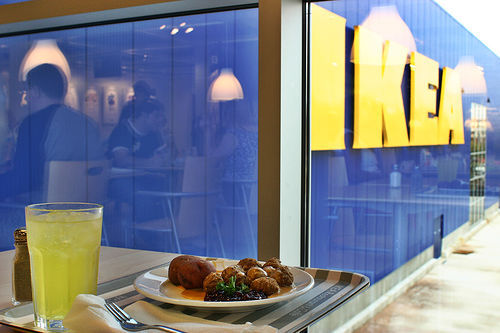Do Not Trust the Meat Mathematics Institute
Friends, as many of you may have noticed, Burger King has begun a promotion for its BK Stacker line of cheeseburgers. The ad focuses on Burger King's Meat Mathematics Institute, where mathematicians from around the world gather to find ways to bring consumers a maximum amount of meat flavor for a minimum cost. Sadly, as of this writing, the ad is not available online, although this related video has made an appearance on YouTube.
While the institute seems like a delightful place to work, I regret to inform you that the research coming out of the institute is as bogus as the existence of the institute itself. The claimed solution to the problem of maximizing meat (or meat flavor, depending on your source) while minimizing cost is contained in the 3 BK Stackers. The Stacker family of burgers has three members, coming in at price points of $1, $2, and $3, respectively.
Right off the bat you should notice something problematic with their solution. If the aim is to optimize meat, why are there components that don't involve meat? These components would only add to the cost, without adding to the amount of meat. You should be able to sell just a single beef patty with some bacon for less than you would be able to sell the $1 stacker, for instance. Right away, then, we see the corrupt influence that the Burger King sponsorship has had on the otherwise (I'm sure) irreproachable standard of academic integrity set by the Meat Mathematics Institute. Without this sponsorship, I'm sure the mathematicians would've discovered a far more optimal meat-delivery system: the (possibly bacon-wrapped) meatball.

Perhaps the Meat Mathematics Institute should look for a more appropriate sponsor.
Even if we restrict our attention to solutions to the "meat/money" problem that are in cheeseburger form, however, it's still easy to see that the solution proposed by the Meat Mathematics Institute is not correct. Indeed, a quick stop at the Burger King website reveals the meat differences between the $1, $2, and $3 BK Stackers. The differences are as follows:
- $1 Stacker: 1 beef patty, 2 half slices of bacon.
- $2 Stacker: 2 beef patties, 3 half slices of bacon.
- $3 Stacker: 3 beef patties, 3 half slices of bacon.
- $1 Stacker: 1 beef patty, 2 half slices of bacon per dollar
- $2 Stacker: 1 beef patty, 1.5 half slices of bacon per dollar
- $3 Stacker: 1 beef patty, 1 half slice of bacon.
It's a shame that this institute has been compromised by corporate interests, but this is perhaps not wholly unexpected. While normally I would advise you to trust your local mathematician, in the case of the meat mathematician, I must regretfully ask you to be on guard. Especially if he asks you to take him out for a meal.
Psst ... did you know I have a brand new website full of interactive stories? You can check it out here!
comments powered by Disqus
